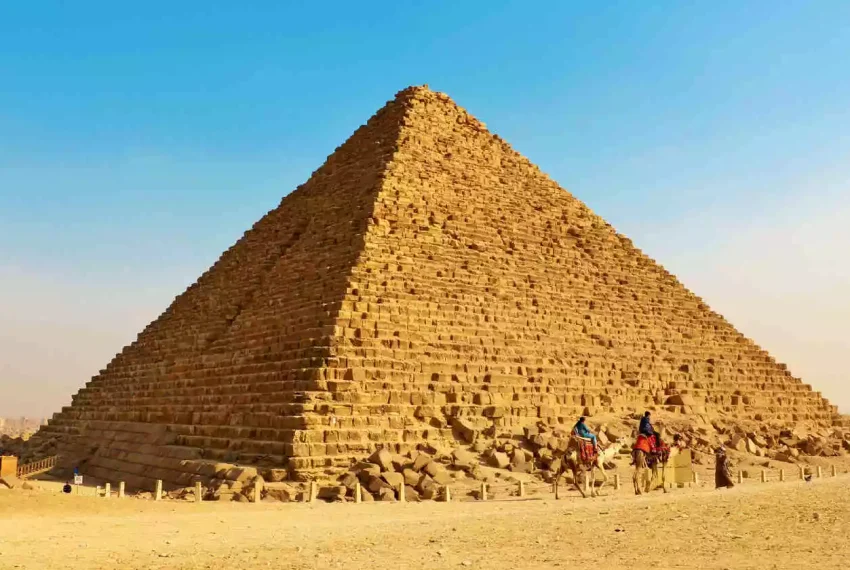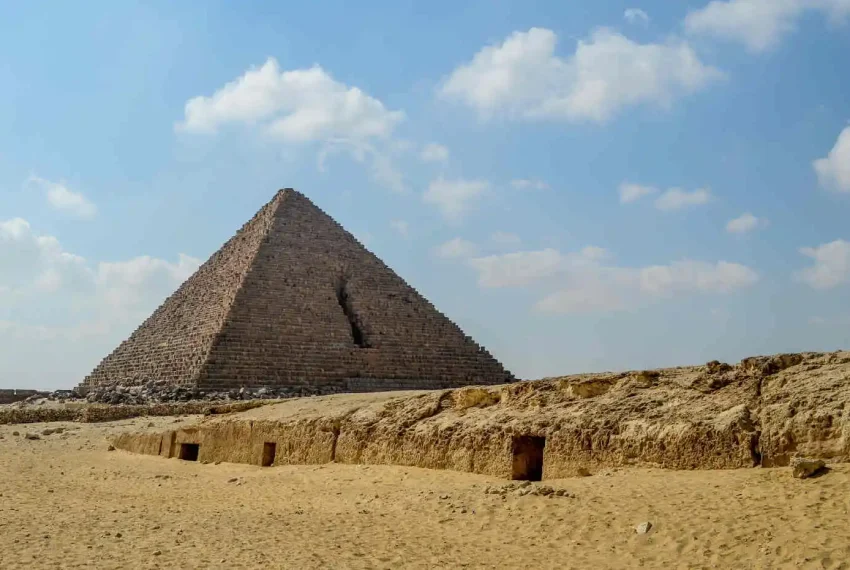The Great Pyramid of Giza is the most popular pyramid in Egypt, however by all accounts not the only one has endured everyday hardship. The Pyramid of Menkaure, otherwise called the Pyramid of Mykerinos, is the littlest of the three pyramids of Giza however holds critical significance in Egyptian history. This pyramid was worked during the Fourth Administration of Old Egypt and was the last resting spot of Pharaoh Menkaure. In this blog, we will dig into the historical backdrop of the Pyramid of Menkaure and its compositional importance.
Pharaoh Menkaure, otherwise called Mykerinos, was the fifth leader of the Fourth Administration of Old Egypt. He controlled from around 2490 BCE to 2472 BCE, during when the pyramids were worked to act as burial chambers for the pharaohs. The Pyramid of Menkaure was the third and littlest pyramid developed during this tradition and was based on the Giza level, alongside the other two pyramids.
The pyramid was initially developed to be 66 meters tall, however because of obscure reasons, the development was rarely finished. The pyramid’s external packaging was made of great limestone, yet it was generally stripped away and utilized for different structures during the Medieval times. The pyramid’s inside structure was made of limestone and stone blocks, like different pyramids of the time.
The pyramid was first investigated during the 1830s by English classicist Richard William Howard Vyse. In 1908, French prehistorian George Daressy found a little sanctuary close to the foundation of the pyramid, which was subsequently reestablished.

The Pyramid of Menkaure is altogether more modest than different pyramids of Giza, however it still features the mind boggling design and designing abilities of the old Egyptians. The pyramid has a base of roughly 102 meters and a level of around 65 meters, making it the littlest pyramid in the Giza level.
The pyramid has three chambers, with the internment chamber being situated at the pyramid’s base. The entry to the pyramid is situated on the northern side and is associated with a rising hall that prompts a little waiting room. The waiting room is associated with a bigger entombment chamber, which is made of rock blocks.
The inside of the pyramid is generally basic, and not at all like different pyramids of the time, it has no intricate beautifications or engravings. The straightforwardness of the inside has driven numerous researchers to guess that the pyramid was underlying when the regal family was not so rich as during the development of different pyramids.

The Pyramid of Menkaure holds extraordinary importance throughout the entire existence of Old Egypt. It was worked during when the pharaohs were viewed as heavenly creatures and must be covered in great burial chambers to safeguard their heritage. The pyramid, alongside the other two pyramids of Giza, filled in as a demonstration of the pharaoh’s power and impact over individuals of Egypt.
The Pyramid of Menkaure likewise features the high level designing abilities of the ancient Egyptians. The development of the pyramid required exact estimations, many-sided plans, and talented work, which was a demonstration of the refinement of their progress.
The Pyramid of Menkaure, alongside different pyramids of Giza, is one of the most famous vacation destinations in Egypt. Guests can explore the pyramid’s inside and find out about the rich history of Old Egypt. Nonetheless, admittance to the inside is restricted and can be testing, particularly for individuals with versatility issues.